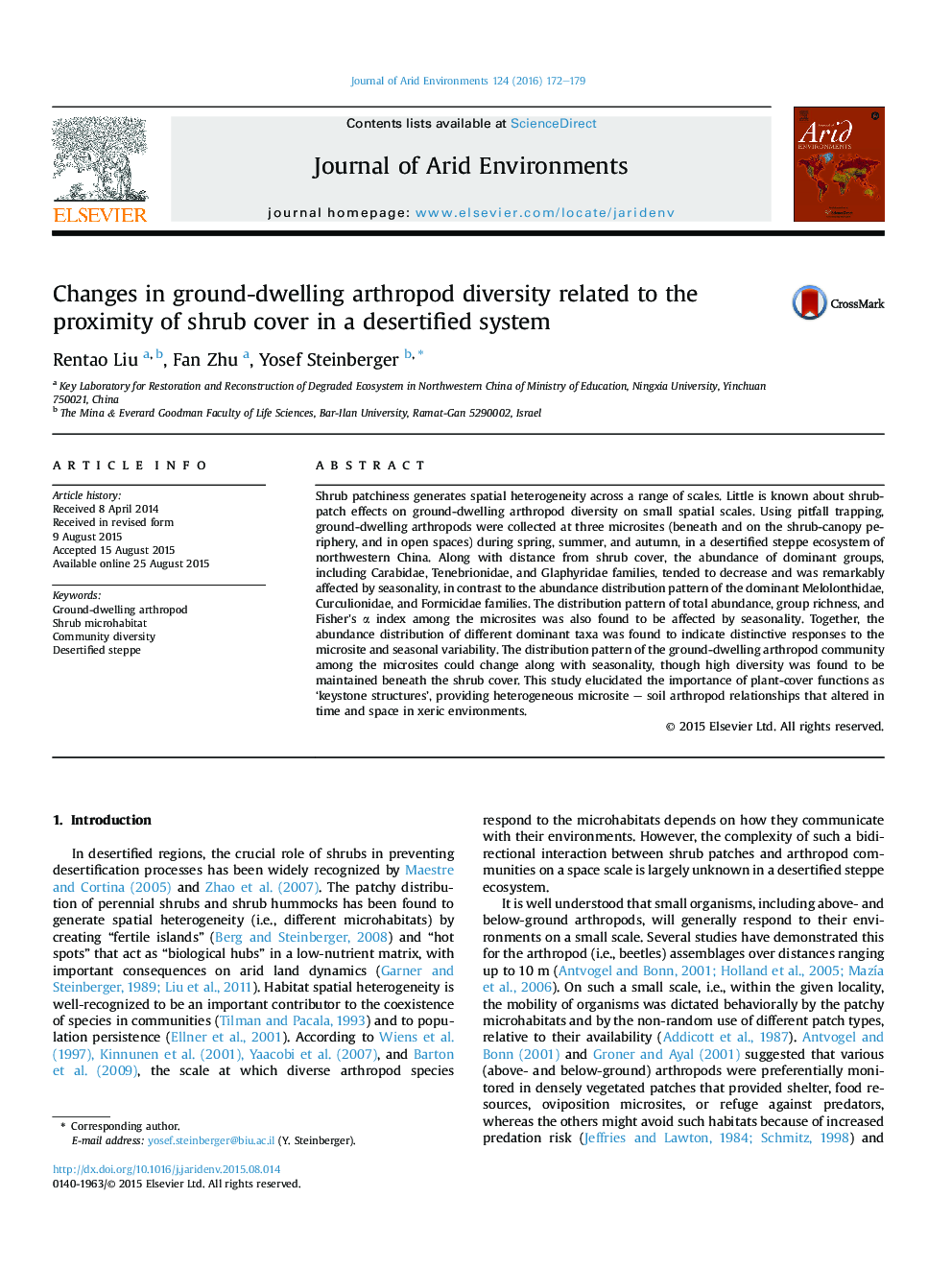| Article ID | Journal | Published Year | Pages | File Type |
|---|---|---|---|---|
| 6303320 | Journal of Arid Environments | 2016 | 8 Pages |
â¢Abundance distribution among microsites differed within dominant taxa.â¢Ground-dwelling arthropods indicated marked seasonal dynamics with timing.â¢Total abundance and richness index differed from Fisher's α response.â¢A relatively higher diversity pattern was observed beneath shrub cover.
Shrub patchiness generates spatial heterogeneity across a range of scales. Little is known about shrub-patch effects on ground-dwelling arthropod diversity on small spatial scales. Using pitfall trapping, ground-dwelling arthropods were collected at three microsites (beneath and on the shrub-canopy periphery, and in open spaces) during spring, summer, and autumn, in a desertified steppe ecosystem of northwestern China. Along with distance from shrub cover, the abundance of dominant groups, including Carabidae, Tenebrionidae, and Glaphyridae families, tended to decrease and was remarkably affected by seasonality, in contrast to the abundance distribution pattern of the dominant Melolonthidae, Curculionidae, and Formicidae families. The distribution pattern of total abundance, group richness, and Fisher's α index among the microsites was also found to be affected by seasonality. Together, the abundance distribution of different dominant taxa was found to indicate distinctive responses to the microsite and seasonal variability. The distribution pattern of the ground-dwelling arthropod community among the microsites could change along with seasonality, though high diversity was found to be maintained beneath the shrub cover. This study elucidated the importance of plant-cover functions as 'keystone structures', providing heterogeneous microsite - soil arthropod relationships that altered in time and space in xeric environments.
